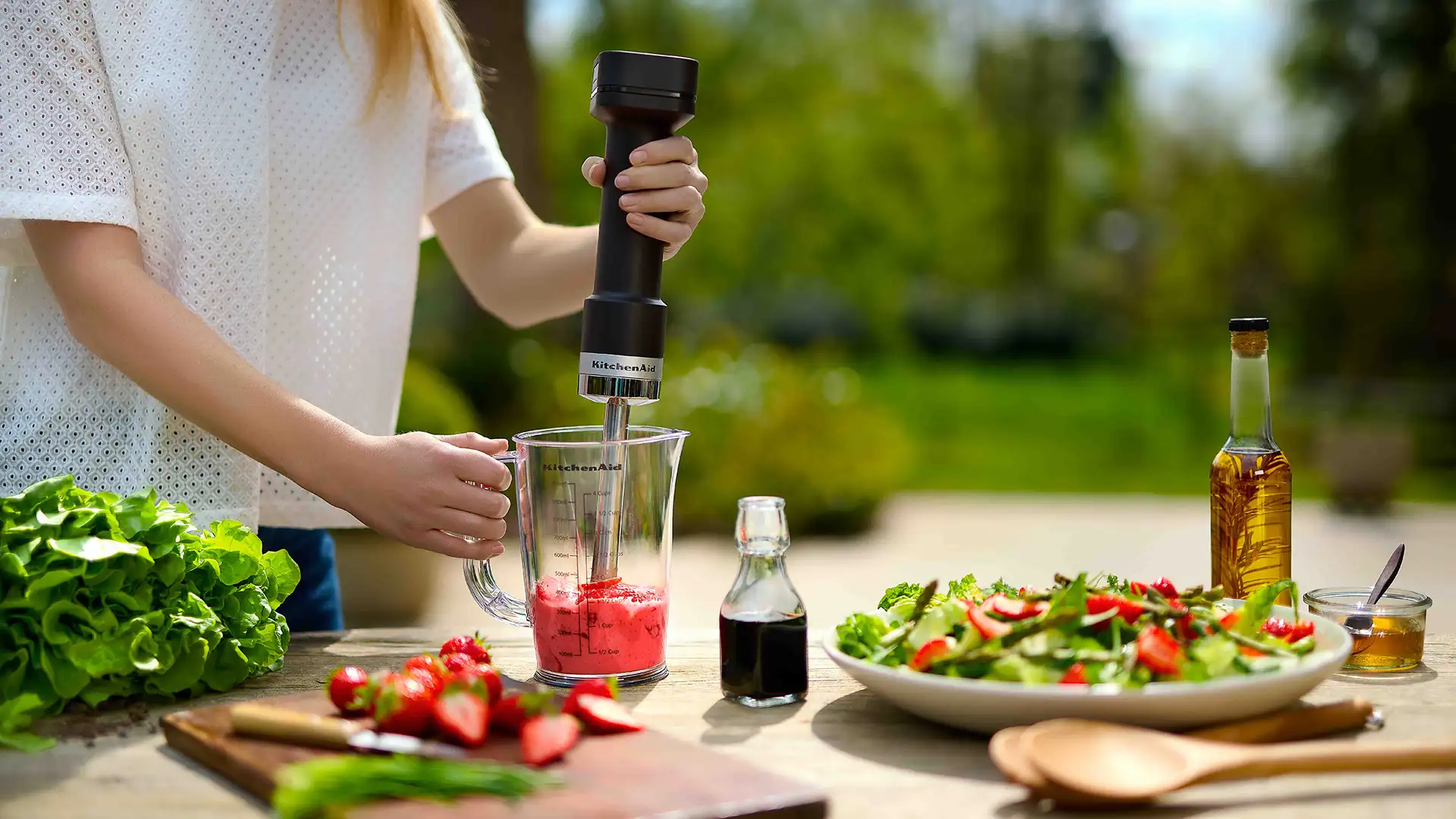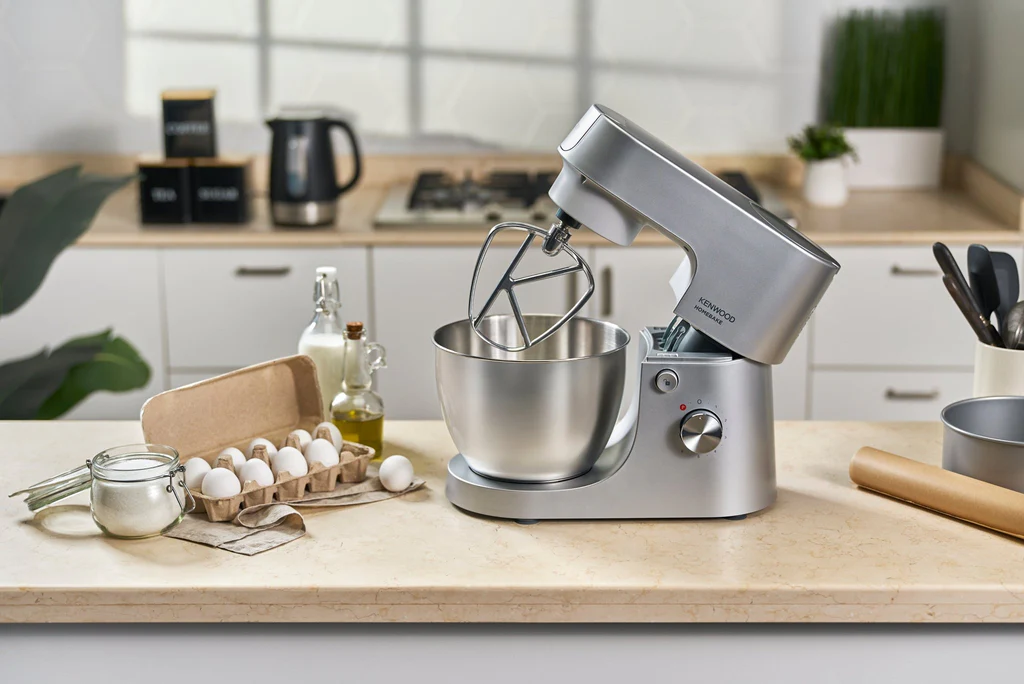Ever stared into your kitchen drawer, looked at the collection of metal attachments that came with your hand mixer, and felt a tiny wave of panic? You’ve got a recipe that calls for “creaming butter and sugar until light and fluffy,” but which tool is actually up for the job? You’re not alone. Figuring out What Is The Best Attachment For Creaming Butter is one of the first hurdles for any aspiring home baker, and getting it right is the secret to tender cakes and perfectly chewy cookies.
Well, let’s clear up the confusion once and for all. As your resident hand mixer guru, I’ve spent countless hours with these gadgets, and I’m here to give you the straight scoop. We’ll break down which attachment is your go-to, why it works so well, and what to do with those other metal bits.
So, What Is The Best Attachment for Creaming Butter?
The short and sweet answer is: the traditional flat beaters. These are the standard, all-purpose attachments that come with virtually every hand mixer. They typically look like two intertwined, thin metal frames and are your absolute best friends for the creaming process.
These beaters are engineered for the perfect balance of mixing and aerating. Their design allows them to cut through the butter, breaking it into smaller pieces, while simultaneously whipping air into the mixture as it combines with the sugar. This process of forcing air into the fat is what creates that coveted “light and fluffy” texture.
Why Do Flat Beaters Work So Well?
Think of creaming as a construction project. You’re building the foundation for your baked goods. The sugar crystals are like tiny, sharp shovels, and the flat beaters are the machinery driving them.
- Aeration: The beaters spin at high speed, forcing the sharp edges of the sugar crystals to punch microscopic holes into the softened butter. Air gets trapped in these tiny pockets. This is aeration, and it’s what gives your cakes lift and your cookies a tender crumb.
- Emulsification: The beaters are also incredibly efficient at combining the fat (butter) and sugar into a stable, uniform mixture. They don’t just stir; they actively blend, ensuring everything is homogenous before you add your eggs and dry ingredients.
The structure of the flat beater is key. It has enough surface area to “smush” and blend the butter and sugar, but also enough open space to whip in air effectively. It’s the jack-of-all-trades in your attachment arsenal.
Can You Use Other Attachments for Creaming Butter?
This is where many bakers get tripped up. You see a whisk and think, “Whisks make things fluffy, right?” Or you see a dough hook and… well, let’s hope you don’t think about using that. Here’s the breakdown.
The Dough Hook: A Definite No-Go
Dough hooks are designed for one thing: kneading. Their spiral or C-shape is meant to gently stretch and develop gluten in bread dough. Using them for creaming would be like trying to paint a wall with a hammer. They will simply push the butter and sugar around the bowl without incorporating any air. The result? A dense, greasy paste. Avoid at all costs.
The Whisk (or Balloon Whisk): A Tempting but Tricky Choice
A balloon whisk attachment excels at incorporating a massive amount of air into thin liquids. It’s perfect for whipping egg whites into stiff peaks or making whipped cream. However, it’s not the ideal tool for creaming butter.
- The Problem: Butter and sugar form a thick, heavy mixture. A standard whisk attachment can struggle to power through it. More importantly, whisks are too good at adding air and not good enough at the “smushing” part. You might end up with an overly aerated but poorly combined mixture. The thin wires of the whisk just can’t break down and cream the butter as effectively as the sturdier flat beaters.
Expert Take: “I always tell my students to stick with the classic flat beaters for creaming,” says professional pastry chef Isabella Rossi. “They provide the perfect combination of force and aeration. Using a whisk is a common beginner mistake that often leads to a greasy texture because the butter and sugar never truly emulsify.”
How to Cream Butter and Sugar Perfectly: A Step-by-Step Guide
Knowing what is the best attachment for creaming butter is half the battle. The other half is technique. Follow these steps for flawless results every time.
- Start with Softened Butter: This is non-negotiable. The butter should be at room temperature—around 65°F (18°C). It should be pliable enough for your finger to leave an indent, but not so soft that it’s greasy or melting. Cold butter won’t aerate, and melted butter won’t hold air at all.
- Use the Right Bowl: Choose a bowl with high sides to prevent splatter and a rounded bottom that allows the beaters to reach everything.
- Start Low, Go Slow: Place your softened butter and sugar in the bowl. Begin mixing on the lowest speed. This prevents a sugar storm from erupting in your kitchen. Mix for about 30-60 seconds until the ingredients are just combined.
- Crank Up the Speed: Increase the hand mixer speed to medium or medium-high. Now the real magic happens.
- Mix, Mix, Mix: Let the mixer run for a full 3 to 5 minutes. Don’t rush this step! You are literally whipping air into fat, and it takes time.
- Scrape Down the Bowl: Periodically (at least twice), stop the mixer and use a silicone spatula to scrape down the sides and bottom of the bowl. This ensures every last bit of butter and sugar is evenly creamed.
- Know When to Stop: How do you know you’re done? The mixture will have visibly increased in volume and lightened in color, turning from a buttery yellow to a pale, off-white. The texture will be fluffy and almost look like frosting.
Choosing the Right Hand Mixer for Baking Tasks
The attachment is the star, but the hand mixer is the director. A weak or poorly designed mixer can make even the best technique frustrating. If you’re serious about baking, here’s what to look for.
- Power (Wattage): For thick batters and doughs, you need a motor that won’t burn out. Look for mixers with at least 250 watts.
- Variable Speeds: A good range of speeds, especially a very slow “start” speed, is crucial for preventing messes and giving you precise control.
- Ergonomics: It should feel comfortable in your hand. Look for a lightweight design and a non-slip grip.
- Attachments: Ensure it comes with high-quality, sturdy flat beaters. Bonus attachments like dough hooks and a whisk are great for versatility.
For a deep dive into our top-rated models, check out our [comprehensive hand mixer buying guide]
Frequently Asked Questions (FAQ)
Q1: How long should I cream butter and sugar?
A: A minimum of 3 to 5 minutes on medium-high speed is the general rule. The goal isn’t just to combine them, but to aerate them. Rushing this step is a common cause of dense, flat cookies and cakes.
Q2: What does “light and fluffy” actually look and feel like?
A: The mixture should have noticeably increased in volume. The color will change from a distinct yellow to a very pale, creamy white. In terms of texture, it will be smooth and fluffy, similar to a light frosting, with no grainy feel from the sugar.
Q3: Can I cream cold butter straight from the fridge?
A: No, this is a recipe for disaster. Cold butter is too hard to incorporate air. It will break into small chunks instead of becoming a smooth mixture, and you’ll put immense strain on your mixer’s motor. Always let it soften to room temperature first.
Q4: My creamed butter mixture looks curdled. What went wrong?
A: This usually happens after you add the eggs. It’s often caused by the eggs being too cold, which makes the butterfat re-solidify. To prevent this, use room-temperature eggs and add them one at a time, mixing well after each addition.
Q5: Is there a difference between creaming for cookies versus cakes?
A: Yes, subtly. For many cakes, you want maximum aeration, so creaming for a full 5-7 minutes can create a very light, airy crumb. For some chewy cookies, you might slightly under-cream (around 3 minutes) to control spread and maintain a denser, chewier texture.
The Final Whisk
So there you have it. When your recipe calls for creaming, reach for those trusty traditional flat beaters. They are unquestionably what is the best attachment for creaming butter, designed specifically to build that perfect, aerated foundation for all your baking adventures. By pairing the right tool with the right technique—softened butter, patience, and plenty of scraping—you’ll elevate your baked goods from good to unforgettable.
Now go forth and cream with confidence! We’d love to hear about your baking successes, so feel free to share your experiences in the comments below.
